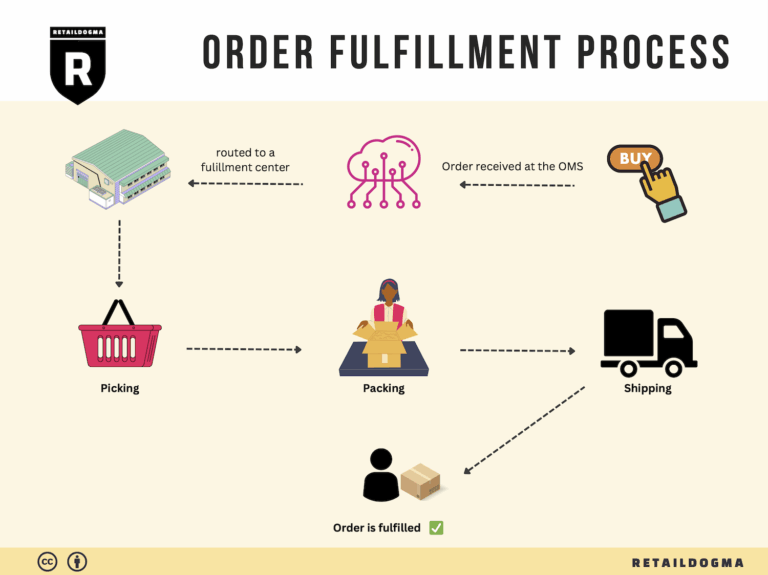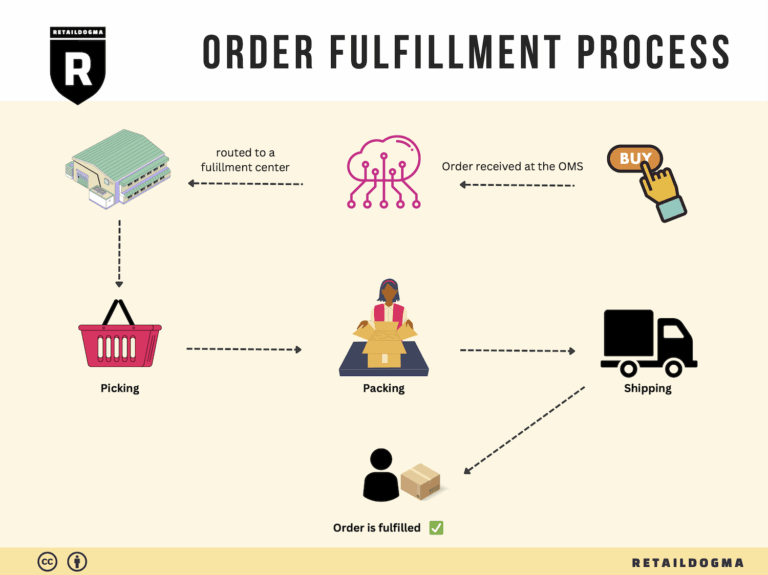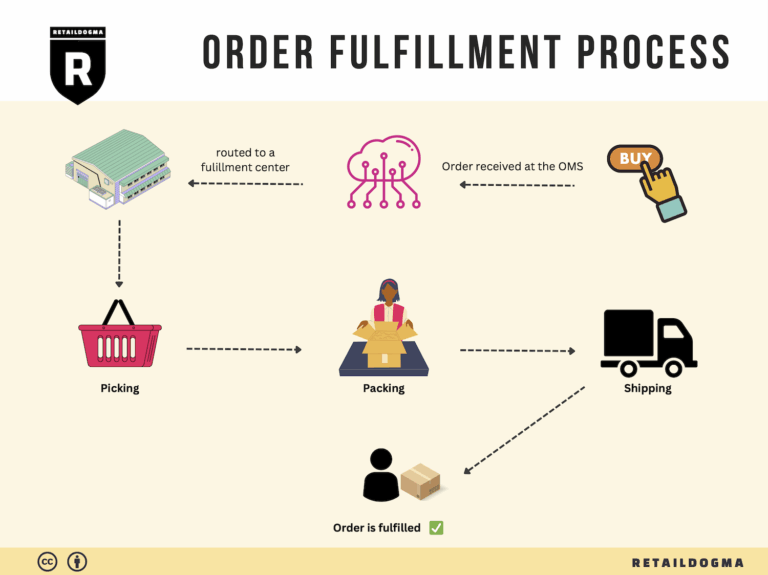What Is A Fulfillment Center? A Complete Guide (2025)
What is E-commerce Fulfillment? An Introduction for Growing Businesses
Understanding E-commerce Fulfillment: A Vital Component for Growth
As an e-commerce business owner, you may find yourself overwhelmed by the logistics of packing and shipping orders. Managing inventory, ensuring timely deliveries, and maintaining customer satisfaction can feel like an uphill battle, especially as your sales begin to scale. This is where e-commerce fulfillment comes into play—a critical process that ensures products reach your customers efficiently and effectively.
At its core, fulfillment is the comprehensive process of getting a product from your inventory into the hands of your customer. This involves several key steps: receiving inventory, storing it, processing orders, picking and packing items, and finally shipping them out. Understanding this process is essential for any growing business looking to enhance its operational efficiency and customer experience.
In this guide, we will explore various fulfillment models that can cater to your business needs, including Third-Party Logistics (3PL) and Fulfillment by Amazon (FBA). Each model has its unique benefits and challenges, and choosing the right one can significantly impact your operations and bottom line.
We will also delve into core fulfillment services that go beyond mere shipping. These services include inventory management, order tracking, returns processing, and customer support—all vital aspects that contribute to a seamless shopping experience for your customers.
Choosing the right fulfillment partner is another crucial decision you will face as your business grows. Factors to consider include the partner’s reliability, technological capabilities, scalability, and pricing structure. We will provide insights on how to evaluate potential partners effectively, ensuring you select one that aligns with your business goals.
Additionally, understanding pricing models in fulfillment is essential for budgeting and financial planning. We will break down common pricing structures and what to expect as you scale, helping you to make informed financial decisions.
Our goal with this guide is to empower you—business owners, operations managers, and entrepreneurs—to make smart decisions about your logistics strategy. By grasping the intricacies of e-commerce fulfillment, you can streamline your operations, enhance customer satisfaction, and ultimately drive growth for your business. Whether you’re just starting or looking to optimize your existing processes, the insights within this guide will serve as a valuable resource on your journey to fulfillment excellence.
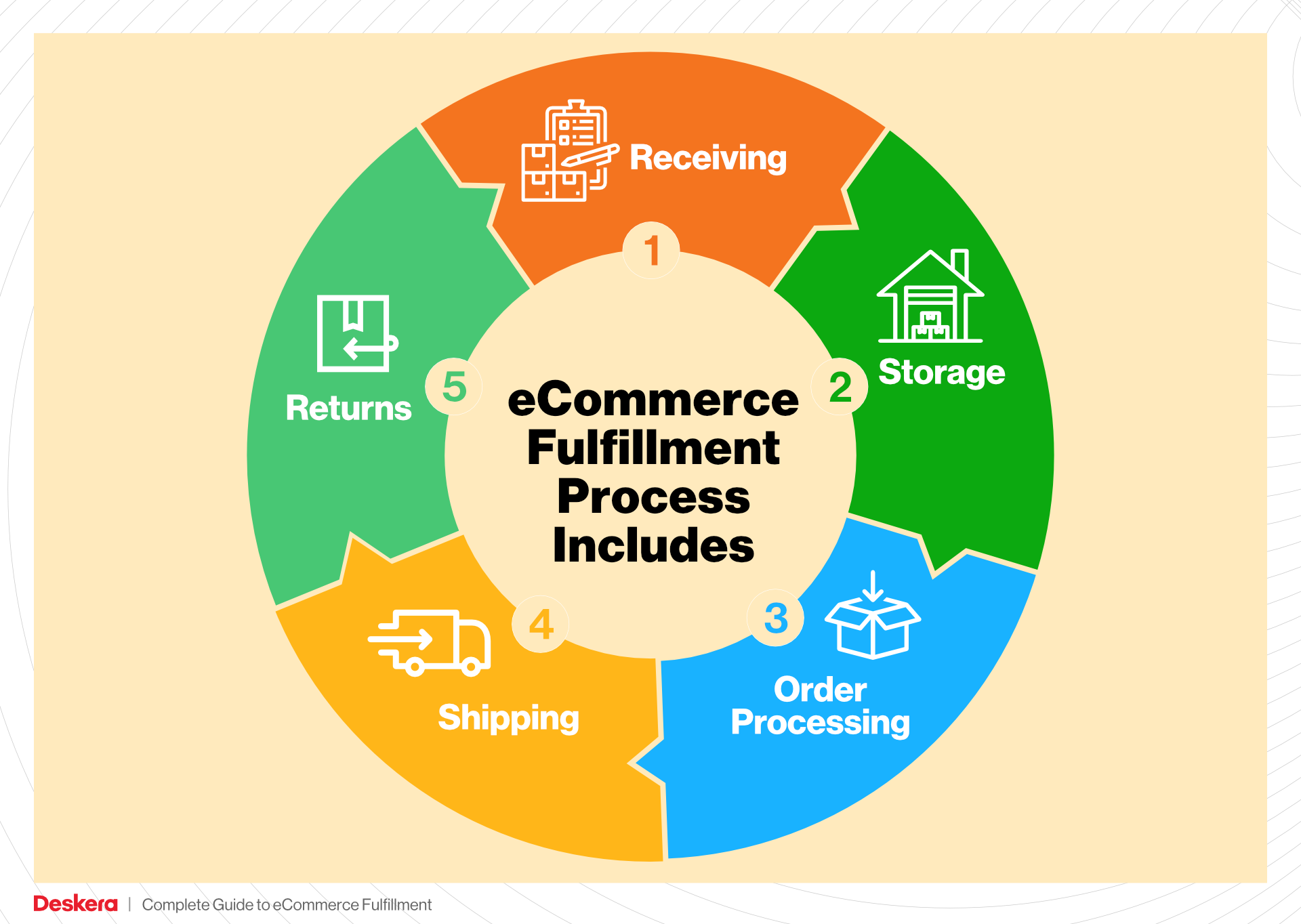
What You’ll Learn In This Guide
- What is E-commerce Fulfillment? An Introduction for Growing Businesses
- The Order Fulfillment Process: From ‘Buy’ Button to Customer’s Door
- Comparing Fulfillment Models: In-House vs. 3PL vs. Dropshipping
- A Deep Dive into Amazon FBA: Pros, Cons, and Who It’s For
- Core Services Offered by Fulfillment Centers
- How to Choose a Fulfillment Partner: A 6-Point Checklist
- Understanding Fulfillment Pricing: A Breakdown of Common Fees
- Frequently Asked Questions (FAQs) about Fulfillment
- Conclusion: Is Outsourcing Fulfillment the Right Move for Your Business?
- Important Disclaimer
The Order Fulfillment Process: From ‘Buy’ Button to Customer’s Door
1. Receiving Inventory
The order fulfillment process begins with receiving inventory from suppliers, an essential step that ensures your e-commerce business has the products needed to meet customer demand. Upon arrival, each shipment is carefully inspected to verify that it matches the purchase order and that there are no damages. This process involves checking quantities against the shipment’s packing list and recording any discrepancies.
Why It’s Important: Efficient receiving minimizes errors and helps maintain accurate inventory levels, which is crucial for timely order fulfillment. If there are issues with the received inventory, it can lead to stockouts or delays in processing customer orders.
Key Term: SKU (Stock Keeping Unit) – This unique identifier allows for precise tracking of individual items within your inventory system, facilitating easier management and retrieval of products.
2. Warehouse Storage
Once the inventory has been received and verified, it is then stored in the warehouse. Effective warehousing strategies play a vital role in the fulfillment process. Products should be organized logically, often using a classification system based on product type, size, or turnover rate. High-demand items may be placed closer to packing stations to reduce retrieval time.
Why It’s Important: Proper storage solutions enhance operational efficiency by minimizing the time spent locating and retrieving products. This organization can significantly impact your ability to meet shipping deadlines, especially during peak seasons.
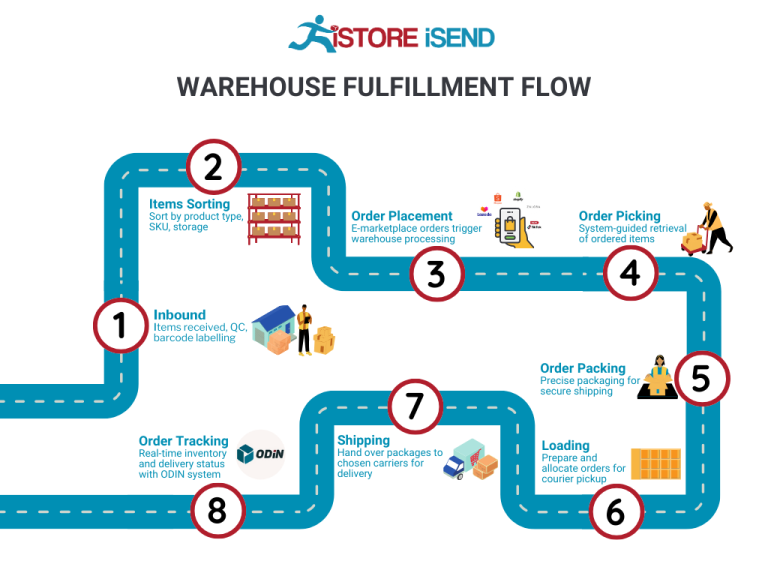
Key Term: Bin Location – This refers to the specific storage location for each SKU within the warehouse. A well-defined bin location system ensures that items can be quickly and accurately found.
3. Order Picking
Order picking is the process of retrieving items from the warehouse to fulfill customer orders. This step can take various forms, including single order picking, batch picking, or zone picking, depending on the size and complexity of the orders. The use of pick lists—documents that outline the items needed for each order—streamlines this process and reduces the risk of errors.
Why It’s Important: The efficiency of the picking process directly affects the speed of order fulfillment. A well-organized picking strategy can lead to faster turnaround times, improving customer satisfaction and repeat business.
Key Term: Pick Lists – These lists guide warehouse staff in selecting the correct items for each order, ensuring accuracy and efficiency during the picking process.
4. Order Packing
Once items have been picked, they move to the packing station, where they are prepared for shipping. This stage involves placing products into appropriate packaging to protect them during transit. Packing slips are often included to provide customers with order details, and careful attention is paid to weight and dimensions to avoid overage charges during shipping.
Why It’s Important: Effective packing minimizes the risk of damage during shipping, which can lead to returns and dissatisfied customers. Additionally, proper packaging ensures compliance with shipping regulations and can reduce shipping costs.
Key Term: Packing Slip – A document that accompanies the shipment, detailing the items included in the package. It serves as both a receipt for the customer and a checklist for the fulfillment team.
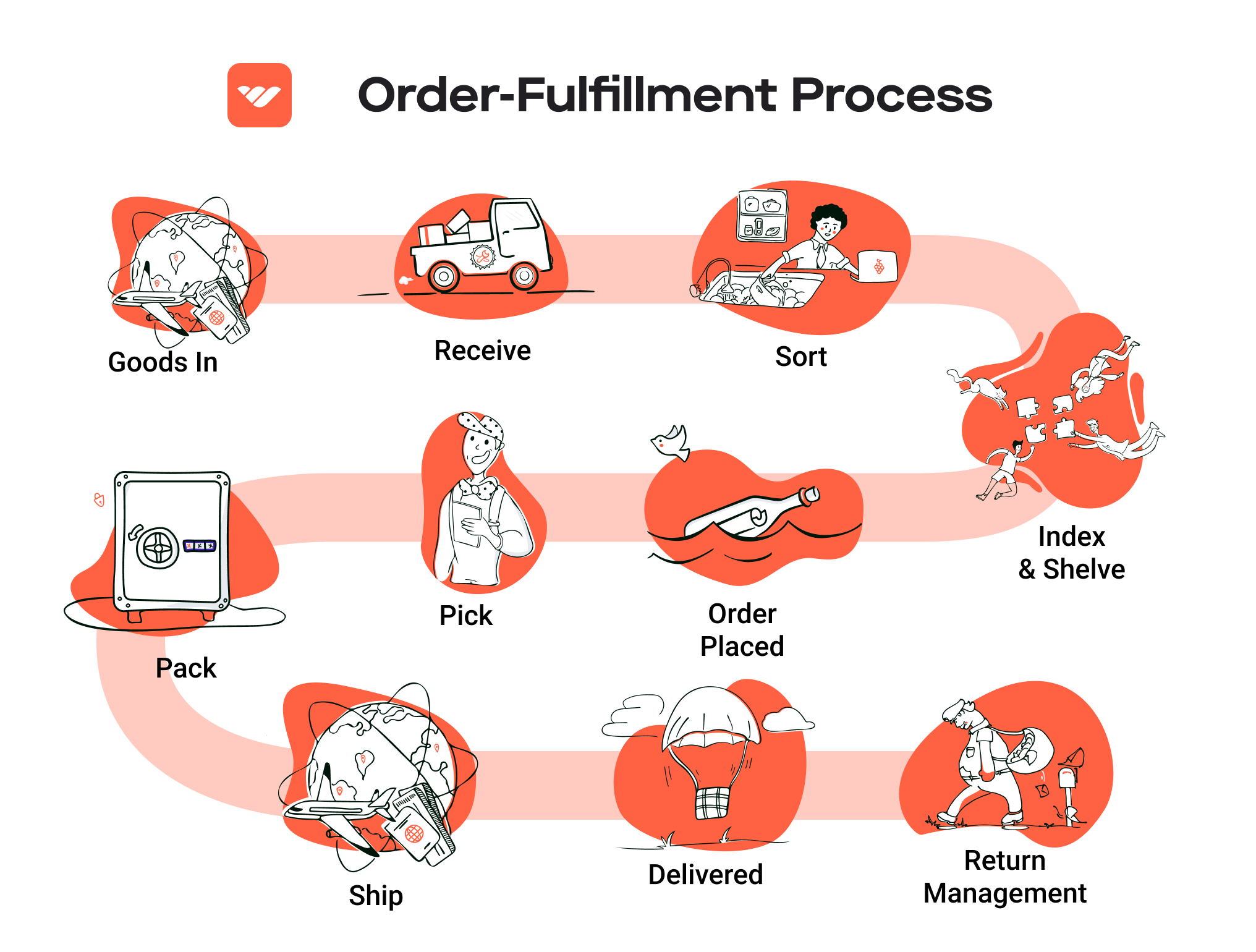
5. Shipping & Delivery
The final step in the order fulfillment process is shipping the packed orders to customers. This involves selecting the appropriate shipping method based on factors such as delivery speed, cost, and destination. Collaborating with reliable carriers and utilizing shipping software can streamline this process, allowing for real-time tracking and updates.
Why It’s Important: Timely and accurate shipping is critical to customer satisfaction. Delays or errors at this stage can tarnish your brand’s reputation and lead to lost sales. Offering multiple shipping options can also enhance customer experience.
Key Term: Last-Mile Delivery – This term refers to the final step of the delivery process, where the package is transferred from a transportation hub to the final delivery destination. It is often the most complex and expensive part of the shipping process.
By understanding and optimizing each step of the order fulfillment process, e-commerce businesses can enhance operational efficiency, reduce costs, and ultimately improve customer satisfaction—key factors in scaling and sustaining success in a competitive marketplace.
Comparing Fulfillment Models: In-House vs. 3PL vs. Dropshipping
Fulfillment Model Comparison
| Model | Who Handles Inventory | Best For (Business Stage) | Key Advantage | Key Disadvantage |
|---|---|---|---|---|
| In-House Fulfillment | The e-commerce business itself | Established businesses with stable order volume | Full control over inventory and operations | High overhead costs and resource demands |
| Third-Party Logistics (3PL) | A third-party provider | Growing businesses looking to scale | Reduced operational burden and expertise access | Less control over inventory and fulfillment speed |
| Dropshipping | Supplier or manufacturer | Startups and low-capital businesses | Low upfront costs and minimal risk | Lower profit margins and dependency on suppliers |
In-House Fulfillment
In-house fulfillment is the model where a business manages its own inventory and shipping processes. This approach typically suits established businesses with stable order volumes, as it requires significant investment in infrastructure, technology, and human resources. The primary advantage of in-house fulfillment is that it provides full control over inventory management, order processing, and shipping. Businesses can tailor their fulfillment processes to align with their specific operational needs and customer service standards. However, this model comes with key disadvantages, primarily high overhead costs and resource demands. Maintaining a warehouse, hiring staff, and investing in technology can strain financial resources, particularly for smaller or growing businesses. Additionally, in-house fulfillment can limit scalability, as increased order volumes may necessitate further investments in infrastructure.
Third-Party Logistics (3PL)
Third-party logistics (3PL) involves outsourcing warehousing and fulfillment operations to a specialized service provider. This model is ideal for growing businesses that need to scale quickly without the burden of managing their own inventory. 3PL providers leverage their expertise in logistics and supply chain management to streamline fulfillment processes, often providing access to advanced technology and logistics networks that small to medium-sized businesses may not afford independently. A significant advantage of using 3PL is the reduced operational burden on the business, allowing owners to focus on core activities such as marketing and product development. However, this model also presents challenges; businesses may experience less control over inventory management and fulfillment speed, which can lead to potential issues with customer satisfaction if not managed carefully. Establishing a strong relationship with a reliable 3PL provider is crucial to mitigate these risks.
Dropshipping
Dropshipping is a fulfillment model where a retailer does not keep products in stock but instead transfers customer orders directly to a supplier or manufacturer. This model is particularly advantageous for startups and businesses with limited capital, as it requires minimal upfront investment. Retailers can offer a wide array of products without the risks associated with holding inventory, thus reducing financial exposure. The key benefit of dropshipping is the low operational risk and the ability to test new products without committing to large inventory purchases. However, dropshipping comes with its own set of challenges, including lower profit margins due to reliance on suppliers and potential delays in fulfillment. Moreover, retailers must manage their suppliers carefully to ensure product quality and timely shipping, as their reputation relies heavily on the performance of these third parties. This dependency can sometimes result in inconsistencies in customer experience, making it essential for dropshippers to establish robust relationships with reliable suppliers.
In summary, selecting the right fulfillment model depends on various factors, including the stage of the business, capital available, and desired control over logistics. Each model has its advantages and disadvantages, and business owners should weigh these carefully against their operational goals and customer expectations.
A Deep Dive into Amazon FBA: Pros, Cons, and Who It’s For
Understanding Fulfillment by Amazon (FBA)
Fulfillment by Amazon (FBA) is a service offered by Amazon that allows sellers to store their products in Amazon’s fulfillment centers. Amazon then takes care of storage, packaging, shipping, and customer service for these products. This service streamlines the logistics for sellers, enabling them to focus more on scaling their businesses rather than managing the complexities of order fulfillment.
How FBA Works
-
Product Listing: Sellers list their products on Amazon and choose to enroll in the FBA program.
-
Inventory Shipment: Sellers send their products to Amazon’s fulfillment centers. Amazon provides guidelines on how to package and label products correctly.
-
Storage: Once the products arrive at Amazon’s warehouses, they are stored until sold. Sellers can track their inventory through the Amazon Seller Central dashboard.
-
Order Processing: When a customer places an order, Amazon picks, packs, and ships the product directly to the customer.
-
Customer Service: Amazon handles customer inquiries and returns, allowing sellers to benefit from Amazon’s established customer service reputation.
-
Payment: Sellers receive payments for their sales, minus Amazon’s fees, which vary based on the size and weight of the products.
Pros of Fulfillment by Amazon
1. Prime Eligibility
Products fulfilled by Amazon are automatically eligible for Amazon Prime, which can significantly increase sales. Prime members often prefer items that offer fast, free shipping, making FBA an attractive option for sellers looking to tap into this vast customer base.
2. Customer Trust
Amazon is synonymous with reliability and customer service. By utilizing FBA, sellers can leverage Amazon’s reputation, increasing customer confidence in purchasing their products. Customers often feel more secure buying from FBA sellers due to the robust return policies and customer support provided by Amazon.
3. Multi-Channel Fulfillment
FBA allows sellers to fulfill orders from other sales channels, such as their own websites or eBay, using Amazon’s infrastructure. This multi-channel fulfillment capability can streamline logistics for businesses that sell across multiple platforms, ensuring a consistent and efficient order processing experience.
4. Simplified Logistics
FBA handles all aspects of logistics, including storage, packing, and shipping. This can free up valuable time and resources for sellers, allowing them to focus on product development, marketing, and other essential business functions.
5. Scalability
FBA is designed to help businesses scale. As sales increase, sellers can send more inventory to Amazon without needing to invest in their own warehousing and shipping infrastructure. This scalability can be particularly beneficial for seasonal businesses or those experiencing rapid growth.
Cons of Fulfillment by Amazon
1. High Fees
FBA is not free. Sellers incur various fees, including storage fees for keeping products in Amazon’s warehouses and fulfillment fees for each item sold. These fees can add up quickly, especially for slow-moving products or larger items, eating into profit margins.
2. Strict Inventory Rules
Amazon has specific guidelines regarding inventory management. Sellers must adhere to strict requirements for product labeling and packaging. Failure to comply can result in additional fees or inventory being returned to the seller, which can disrupt operations.
3. Commingling Risks
FBA allows for commingling of inventory, where products from different sellers are stored together. This can pose risks, such as receiving returns or complaints for items that were not originally sold by the seller. This lack of control can lead to brand reputation issues if customers receive damaged or defective goods.
4. Loss of Control
When using FBA, sellers relinquish some control over the fulfillment process. This includes the handling of customer service and returns. While this can be a pro, it can also be a con, especially for businesses that prioritize a personalized customer experience.
5. Dependency on Amazon
Relying on FBA can create a dependency on Amazon’s platform. Changes in Amazon’s policies, fee structures, or algorithm can have a significant impact on sellers’ businesses, making them vulnerable to shifts in Amazon’s operational strategies.
Who is FBA Best For?
Fulfillment by Amazon is particularly well-suited for:
-
Small to Medium-Sized Businesses: Companies that do not have the resources to invest in their own warehousing and logistics can benefit from FBA’s comprehensive services.
-
New Sellers: Entrepreneurs just starting out can use FBA to leverage Amazon’s established customer base and reputation while they build their own brand.
-
Seasonal Sellers: Businesses that see fluctuating sales throughout the year can take advantage of FBA’s scalability without the long-term commitment of maintaining a warehouse.
-
Brands Seeking Growth: Established brands looking to expand their market reach and streamline their logistics may find FBA a valuable tool in their growth strategy.
-
Multi-Channel Retailers: Sellers who operate on various platforms can use FBA to simplify their logistics and ensure a consistent customer experience across channels.
In conclusion, while Fulfillment by Amazon offers numerous advantages that can streamline operations and enhance sales potential, it is crucial for e-commerce businesses to weigh these benefits against the associated costs and risks. By understanding both the pros and cons, sellers can make informed decisions about whether FBA aligns with their overall business strategy.
Core Services Offered by Fulfillment Centers
Inventory Management & Warehousing
Inventory management and warehousing are foundational services offered by fulfillment centers. This service involves the systematic tracking and storage of products in a manner that ensures optimal stock levels and efficient retrieval processes. Fulfillment centers utilize advanced inventory management systems that provide real-time data on stock levels, product turnover rates, and demand forecasts.
Benefits to E-Commerce Businesses:
1. Increased Efficiency: By maintaining accurate inventory records, businesses can reduce the chances of stockouts or overstock situations. This efficiency translates to better customer satisfaction, as products are more likely to be available when customers wish to purchase them.
2. Cost Reduction: Proper inventory management minimizes holding costs and improves cash flow. Businesses can avoid the financial pitfalls associated with excess inventory or urgent replenishment needs.
3. Scalability: As e-commerce businesses grow, having a dedicated fulfillment center allows for seamless scaling of inventory without the need for significant upfront investment in additional warehousing space or logistics capabilities.
Pick and Pack Services
Pick and pack services are a critical component of the fulfillment process. This service involves the selection (picking) of ordered items from the warehouse and then packaging them for shipment (packing). Fulfillment centers employ sophisticated picking methods, such as batch picking or wave picking, to ensure that orders are filled quickly and accurately.
Benefits to E-Commerce Businesses:
1. Speed and Accuracy: Efficient pick and pack operations lead to faster order processing times, which is essential for meeting customer expectations in today’s fast-paced e-commerce environment. Accurate picking reduces the risk of returns due to incorrect orders.
2. Customization: Many fulfillment centers offer customizable packaging options, allowing e-commerce businesses to enhance their brand identity through tailored packaging solutions.
3. Error Reduction: Automation and technology integrated into pick and pack services help minimize human error, ensuring that orders are fulfilled correctly and consistently.
Kitting and Assembly
Kitting and assembly involve combining multiple products into a single package or preparing items for sale as a set. This service can include assembling products, bundling items together, or creating promotional kits that enhance the value proposition for customers.
Benefits to E-Commerce Businesses:
1. Enhanced Product Offerings: Kitting allows businesses to create unique product bundles that can attract customers and increase average order values. This strategy can be particularly effective during promotional periods or holiday seasons.
2. Streamlined Operations: By outsourcing kitting and assembly to a fulfillment center, e-commerce businesses can focus on core activities such as marketing and sales, rather than the logistical complexities of assembling products.
3. Reduced Time to Market: With fulfillment centers handling kitting and assembly, businesses can launch new product lines or promotional kits more quickly, ensuring they remain competitive in the market.
Returns Management (Reverse Logistics)
Returns management, often referred to as reverse logistics, is the process of handling returned products efficiently. This service includes receiving returned items, inspecting them, restocking them if they are in sellable condition, or managing the disposal or recycling of defective items.
Benefits to E-Commerce Businesses:
1. Improved Customer Satisfaction: A streamlined returns process enhances the customer experience, as buyers appreciate easy returns. This can lead to increased customer loyalty and repeat purchases.
2. Cost Efficiency: Effective returns management can minimize the costs associated with returns. By quickly processing returns and reselling items when possible, businesses can recover some of their losses.
3. Data Insights: Analyzing returns can provide valuable insights into customer behavior and product quality. Understanding why products are returned can inform inventory decisions, product development, and marketing strategies.
Conclusion
In summary, fulfillment centers offer a range of core services that significantly enhance the efficiency and effectiveness of e-commerce operations. From inventory management to returns handling, these services are designed to streamline logistics, improve customer satisfaction, and ultimately drive growth for businesses in the competitive e-commerce landscape. By leveraging these services, e-commerce entrepreneurs can focus on scaling their sales while ensuring that their logistics are handled by experts.
How to Choose a Fulfillment Partner: A 6-Point Checklist
Location & Warehouse Network
The geographical positioning of your fulfillment partner’s warehouses is crucial. A well-placed network can significantly reduce shipping times and costs, enhancing customer satisfaction.
Why It Matters:
A fulfillment center located close to your primary customer base can expedite delivery, lower shipping expenses, and improve overall logistics efficiency.
Questions to Ask:
– Where are your warehouses located, and how does this align with my target markets?
– What is your average shipping time to key regions?
– Do you have multiple warehouses to distribute inventory more effectively?
– Can you provide insights into your shipping carriers and their performance?
Technology & Integrations
In today’s digital landscape, the ability to seamlessly integrate with your e-commerce platform and other business tools is non-negotiable.
Why It Matters:
Advanced technology can streamline operations, automate order processing, and provide real-time tracking for both you and your customers.
Questions to Ask:
– What technology platforms do you use for inventory management and order fulfillment?
– Can your system integrate with my existing e-commerce platform (e.g., Shopify, WooCommerce)?
– Do you offer real-time inventory tracking and reporting?
– How do you handle order updates and customer notifications?
Specializations (e.g., Cold Storage, Oversized Items)
Different businesses have unique product requirements that may necessitate specialized services.
Why It Matters:
If you deal in specific types of products, such as perishables or oversized items, it’s essential that your fulfillment partner can accommodate those needs effectively.
Questions to Ask:
– Do you have the capability to handle specialized inventory, such as cold storage or fragile items?
– What are your procedures for managing and storing these specialized products?
– Can you provide case studies or examples of how you’ve successfully handled similar products for other clients?
– What certifications do you hold for handling specialized inventory?
Scalability & Capacity
As your business grows, your fulfillment needs will evolve. A partner that can scale with you is vital for long-term success.
Why It Matters:
A partner’s ability to scale operations quickly can prevent bottlenecks and ensure you meet customer demand without compromising service quality.
Questions to Ask:
– What is your current capacity for handling increased order volumes?
– How quickly can you scale operations if my business experiences a sudden spike in orders?
– What are your contingency plans in case of unexpected demand increases?
– Can you provide examples of how you have managed scaling for other clients?
Pricing and Contracts
Understanding the cost structure and contractual obligations is essential for budgeting and financial planning.
Why It Matters:
Transparent pricing models help you avoid unexpected costs and allow for accurate profit margin calculations.
Questions to Ask:
– Can you provide a detailed breakdown of your pricing structure?
– Are there any additional fees I should be aware of (e.g., storage, handling, shipping)?
– What are the terms of your contracts, and is there flexibility for renegotiation as my business needs change?
– How do you handle pricing adjustments in response to market changes or increased shipping costs?
Customer Support & Reviews
The level of support you receive can significantly impact your business operations, especially during peak periods or when issues arise.
Why It Matters:
Reliable customer support ensures that you can resolve issues quickly and maintain a high level of service for your customers.
Questions to Ask:
– What is your customer support structure, and what hours are you available?
– Can I reach a dedicated account manager for urgent queries?
– How do you handle order discrepancies or shipping issues?
– Can you provide references or case studies from current or past clients regarding your customer service?
Conclusion
Choosing the right fulfillment partner is a critical decision that can influence your business’s success. By considering these six key points, you can make an informed choice that aligns with your operational needs and growth goals. Always ensure that your potential partner is not just a service provider, but a strategic ally in your journey to scale your e-commerce business effectively.
Understanding Fulfillment Pricing: A Breakdown of Common Fees
Initial Setup Fees
When partnering with a fulfillment center, businesses often encounter initial setup fees. These fees cover the costs associated with establishing your account and integrating your systems with the fulfillment provider. Typically, this includes setting up your inventory management system, configuring your online store for order routing, and conducting initial training for your team.
The calculation of initial setup fees can vary significantly based on the complexity of your operations and the fulfillment provider’s pricing structure. Factors influencing these fees include the number of products you offer, the technology integration required, and any custom features you need. Businesses should expect to pay a one-time fee, which can range from a few hundred to several thousand dollars, depending on the provider’s capabilities and your specific needs.
Receiving Fees
Receiving fees are charged when your products arrive at the fulfillment center. This fee covers the labor and resources needed to unload, inspect, and inventory your goods. Receiving fees are typically calculated on a per-pallet or per-box basis, depending on the volume of goods being processed.
Most fulfillment centers have a standard rate for receiving, but this can also vary based on the complexity of the items being received. For example, if your products require special handling, such as fragile items or hazardous materials, you may incur higher receiving fees. To manage costs effectively, businesses should consider consolidating shipments whenever possible and ensuring that shipments are well-documented and organized to facilitate smoother receiving processes.
Storage Fees (per pallet/bin)
Storage fees are charged for the space your inventory occupies within the fulfillment center. These fees are typically assessed on a monthly basis and can be calculated on a per-pallet or per-bin basis, depending on how your inventory is organized.
Rates may vary based on the type of storage required; for instance, climate-controlled storage can cost more than standard storage. Additionally, many fulfillment centers have tiered pricing based on volume, meaning that the more pallets you store, the lower your per-pallet fee may be. Understanding your inventory turnover rate is crucial here; slow-moving items may lead to higher storage costs. Therefore, regularly reviewing your inventory levels and optimizing your stock can help minimize these fees.
Pick & Pack Fees (per item/order)
Pick and pack fees are charged for the labor involved in picking items from storage and packing them for shipment. This fee is usually calculated on a per-item or per-order basis, with some fulfillment centers offering volume discounts for larger orders.
The calculation of pick and pack fees can vary based on the complexity of the order. For instance, if your order requires multiple items, custom packaging, or special instructions, the fees may be higher. Businesses should assess their product offerings and order patterns to negotiate better rates or consider optimizing their packaging and order sizes to reduce pick and pack fees.
Shipping Fees
Shipping fees are one of the most significant costs associated with fulfillment and can vary widely based on several factors, including the shipping method, the destination, package dimensions, and weight. Fulfillment centers often have partnerships with major carriers, allowing them to offer competitive shipping rates.
Shipping fees can be calculated based on flat rates, weight-based rates, or dimensional weight pricing, depending on the carrier’s policies. It’s essential to evaluate the shipping options available to you, including expedited shipping or standard ground shipping, to balance cost and delivery speed. Additionally, some fulfillment centers may offer discounted rates for bulk shipping or free shipping thresholds, which can be advantageous for businesses looking to minimize costs.
Tips for Getting an Accurate Quote
-
Be Transparent About Your Needs: When requesting quotes, provide detailed information about your inventory, order volume, and specific requirements. This transparency will help fulfillment centers give you a more accurate estimate.
-
Ask About Hidden Fees: Inquire about any additional fees that may not be immediately apparent, such as surcharges for peak seasons, returns processing, or special handling.
-
Compare Multiple Providers: Don’t settle for the first quote you receive. Compare quotes from multiple fulfillment centers to understand the market and identify the best value for your business.
-
Review Contract Terms: Ensure you understand the terms of the contract, including any cancellation fees, minimum volume requirements, or pricing guarantees.
-
Negotiate Terms: Don’t hesitate to negotiate terms, especially if you have a higher volume of orders or a long-term partnership in mind. Many fulfillment centers are willing to adjust pricing based on potential business volume.
By understanding these common fulfillment fees and actively seeking detailed quotes, businesses can effectively manage their logistics costs and enhance their operational efficiency as they scale.
Frequently Asked Questions (FAQs) about Fulfillment
1. What is a fulfillment center?
A fulfillment center is a specialized facility that handles the storage, processing, and shipping of products on behalf of businesses. It serves as a crucial hub in the supply chain where orders are fulfilled and dispatched to customers, enabling businesses to efficiently manage inventory and logistics without maintaining their own warehouses.
2. What is the difference between a warehouse and a fulfillment center?
While both warehouses and fulfillment centers are used for storing products, their purposes differ significantly. A warehouse primarily focuses on storage and inventory management, while a fulfillment center is dedicated to order processing, picking, packing, and shipping products directly to customers. Fulfillment centers often have more advanced technology and processes to handle order fulfillment efficiently.
3. What services does MSC Industrial Supply’s fulfillment center provide?
MSC Industrial Supply’s fulfillment center offers a variety of services, including inventory management, order processing, shipping, and returns handling. Additionally, their ResaleLink program provides volume wholesalers access to a broad range of in-stock products with competitive pricing and shipping options.
4. How much do fulfillment services cost?
Fulfillment service costs can vary widely based on several factors, including the volume of orders, the complexity of the products, storage needs, and additional services like packaging and returns handling. Typically, fees may include per-order charges, storage fees, and shipping costs. It’s essential to evaluate different providers to find the best fit for your budget and needs.
5. What is a 3PL?
A 3PL, or third-party logistics provider, is a company that offers outsourced logistics services, including warehousing, fulfillment, and shipping. By partnering with a 3PL, businesses can streamline their supply chain operations, reduce overhead costs, and focus on core competencies while leveraging the expertise and resources of the logistics provider.
6. How can I track my orders through MSC’s fulfillment center?
MSC Industrial Supply provides order tracking capabilities through their online account system. Customers can log in to view real-time inventory, check order statuses, and track shipments. Additionally, confirmation emails often include tracking numbers for easy monitoring of delivery progress.
7. What shipping options are available through MSC’s fulfillment center?
MSC Industrial Supply offers various shipping options, including standard ground shipping, expedited shipping, and same-day shipping for certain orders. Depending on your location and order size, you may also qualify for free shipping on orders over a specific amount, such as $250 for internet orders.
8. Can I customize packaging for my orders?
Yes, MSC Industrial Supply allows for customization of packaging in some cases, especially for businesses utilizing their ResaleLink program. Custom packaging can help enhance brand identity and improve the customer experience. It’s best to discuss specific requirements with MSC’s customer service to explore available options.
9. What are the order cut-off times for same-day shipping?
Order cut-off times for same-day shipping typically depend on the specific products and fulfillment center operations. Generally, orders must be placed by a certain time, often in the early afternoon, to qualify for same-day dispatch. For the most accurate information, it’s advisable to check with MSC’s customer service or their website.
10. How do I handle returns through MSC’s fulfillment center?
MSC Industrial Supply has a defined return policy that outlines the process for returning products. Customers can initiate returns by contacting customer service or using the online portal. Returns are typically processed quickly, and customers can expect clear instructions regarding shipping and potential refunds or exchanges.
Conclusion: Is Outsourcing Fulfillment the Right Move for Your Business?
The Case for Outsourcing Fulfillment
Outsourcing fulfillment can be a transformative decision for e-commerce businesses aiming for growth and efficiency. By leveraging a fulfillment service, companies can save significant time and resources, allowing them to focus on core business activities like marketing and customer engagement. This time-saving aspect is crucial, as it enables businesses to respond more swiftly to market changes and customer demands.
Scalability is another compelling advantage. As your business grows, so too does the complexity of managing inventory, shipping logistics, and order processing. A fulfillment partner can seamlessly scale operations to accommodate increased order volumes without the need for substantial investments in infrastructure or staffing. This flexibility is especially beneficial during peak seasons or unexpected surges in demand.
Moreover, partnering with a fulfillment expert provides access to specialized knowledge and technology that can enhance overall operational efficiency. These partners often have established systems and processes that ensure faster shipping times, improved order accuracy, and better inventory management. By tapping into this expertise, businesses can enhance their customer experience, leading to higher satisfaction and retention rates.
However, the choice of fulfillment partner is paramount. It’s essential to select a provider that aligns with your business goals and can grow alongside you. Evaluate potential partners based on their capabilities, technology, customer service, and track record in your industry.
To determine if outsourcing fulfillment is the right move for your business, consider conducting an audit of your current shipping process. Analyze your costs, efficiency, and customer feedback. This assessment will provide clarity on whether a fulfillment partner could enhance your operational capabilities and contribute to your growth strategy. Taking this step could be the catalyst your business needs to scale effectively.
Important Disclaimer
⚠️ Important Disclaimer
The information in this guide is for educational purposes. Fulfillment services, pricing, and platform features change frequently. Always conduct your own due diligence and consult with providers directly before making business decisions.




